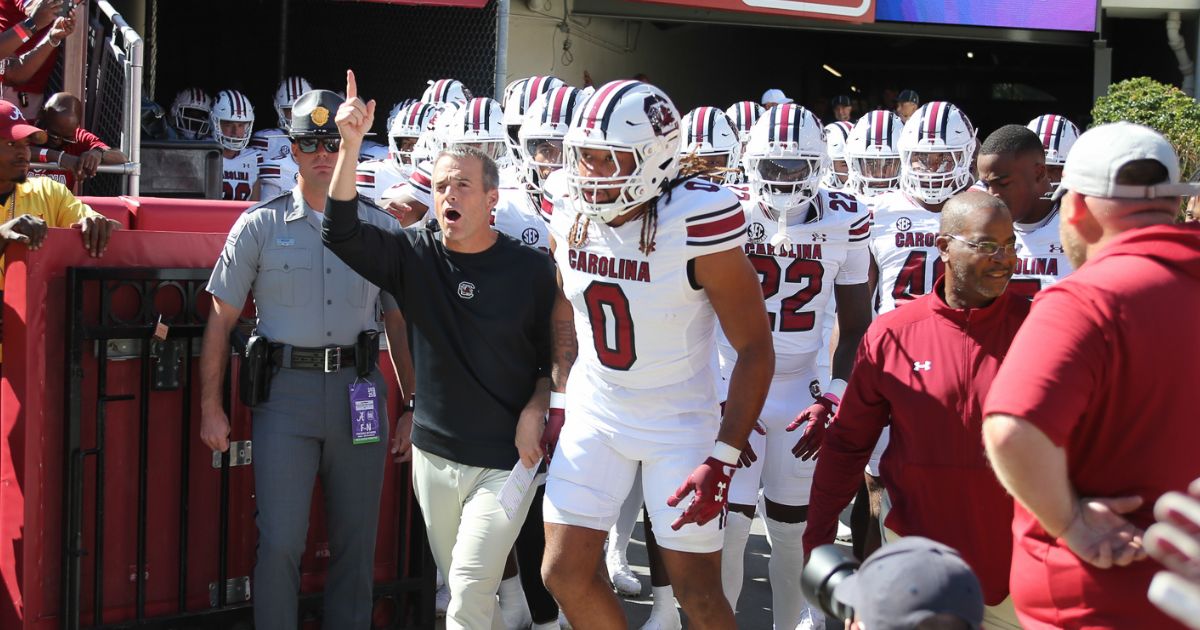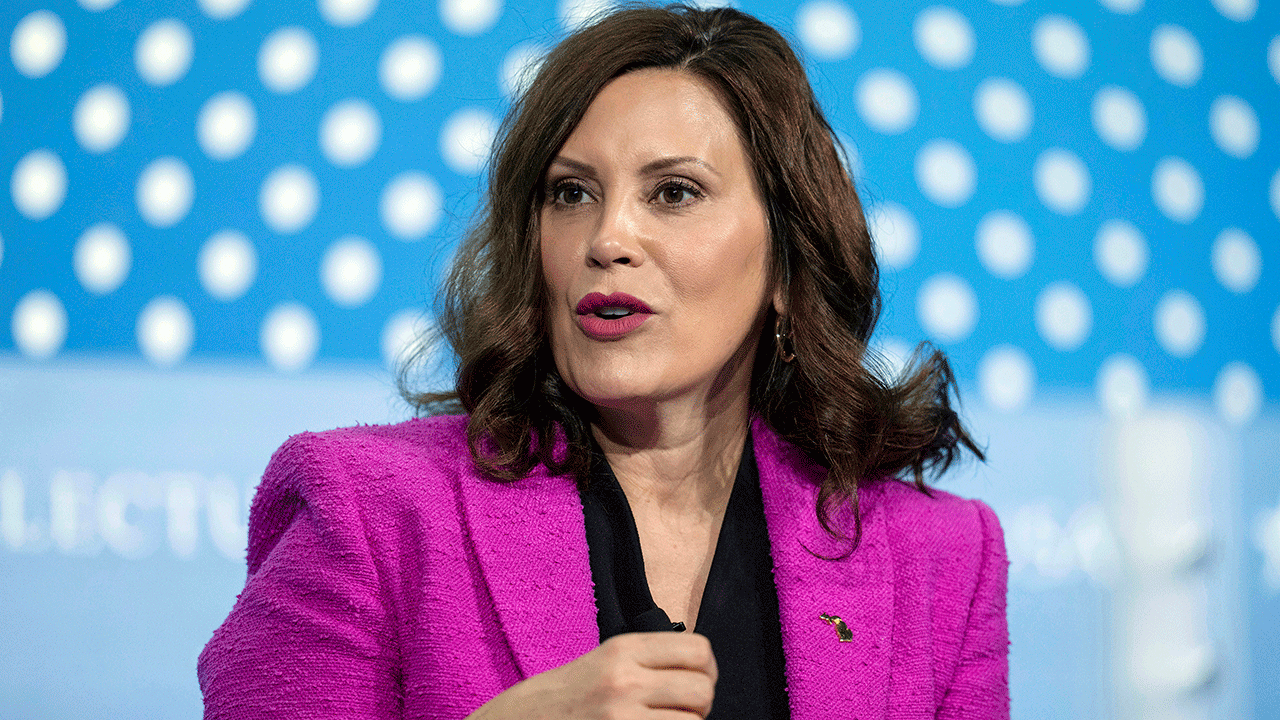Entertainment
Jack Antonoff hopes the music industry has been taking notes
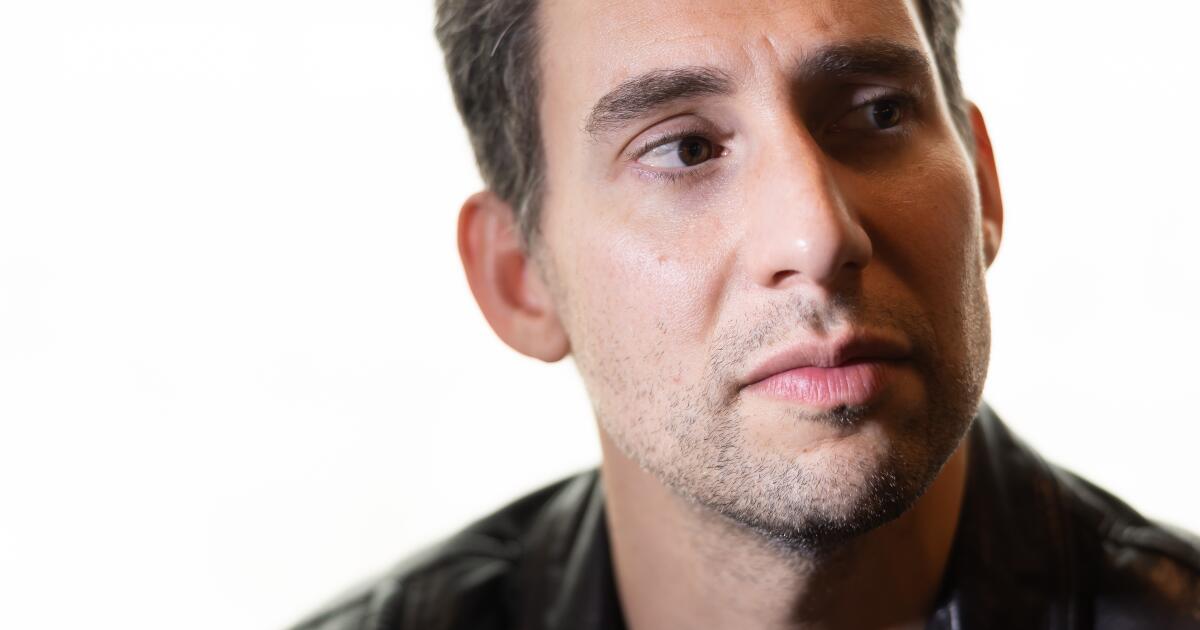
“You know who I miss right now?” Jack Antonoff asks. “Nancy Meyers. I feel like she’s been on a bit of a break.”
The Grammy-winning producer, songwriter and frontman of the rock band Bleachers is standing in the lush garden outside his private recording studio in Hollywood, which — come to think of it — looks like a spot out of one of Meyers’ sumptuously designed romantic comedies. There are gently arcing palm trees, a gleaming built-in barbecue, a refrigerated drawer full of chilled sparkling waters.
“I think we’re cresting out of the moment of film needing to be a harsh slice of reality, and I love that,” Antonoff continues. “With Nancy Meyers” — the director’s most recent feature, for the record, was 2015’s “The Intern” — “a lot of the criticism was always: ‘No one has a kitchen like that.’ And I’m like, Yeah, that’s why it’s cool.”
As a guy who came up in New Jersey’s scrappy punk scene, Antonoff, 40, is perhaps an unlikely Meyers stan. Yet he’s undoubtedly in his high-gloss blockbuster era: This year alone he had a major hand in Taylor Swift’s “The Tortured Poets Department” and Sabrina Carpenter’s “Short n’ Sweet” — both widely tipped for multiple Grammy nods when nominations are announced on Nov. 8 — and co-produced a track by Kendrick Lamar (“6:16 in L.A.”) as part of Lamar’s world-stopping beef with Drake. He also toured behind Bleachers’ latest LP, composed music for a new Broadway production of Shakespeare’s “Romeo and Juliet” and settled into married life with actor Margaret Qualley, to whom he got hitched last year near their home in New Jersey.
Antonoff looked back on it all on a recent afternoon at his studio before heading to a Bleachers gig at the Greek Theatre, where his dad joined the band for a rendition of “How Dare You Want More.”
Do you have a place in L.A. or do you stay at a hotel when you’re here?
No, I love hotels. I live so much of my life in hotels that I’ve really crystallized my experience — I know how to do it. But I also love being home. My partner and I, our life is pretty tight — like a 60-mile radius between New York and New Jersey. You know your home based on the feeling you have when the plane lands. When I get to L.A., I feel excitement: What could happen? I land at Newark or JFK or hopefully LaGuardia and my shoulders drop. I love this studio, but Margaret and I do not sit around and dream about living anywhere else. We’ve reached the point in our life where we’re both working pretty hard, filled with ideas and ambitions, but the magical place we go to in our minds is just being home.
Alas, you’re on tour.
I love playing shows. But it’s funny that I ended up doing this for a living because I dislike travel greatly. I like cars a lot. We’re actually not doing buses anymore. For this tour, I looked at it — there’s a real tour manager in my head because I did it for so long — and I’m like, OK, let’s structure this so if the drive is under five hours, you go to bed in the hotel, you wake up at 9 and you get there in time for soundcheck. I love sitting in a car listening to music, having to pee so bad, then you finally stop and you get to pick out some cool snacks.
You’re known to jump into the audience during a Bleachers show. You ever get skeeved out being touched by so many people?
One of the reasons I do what I do is because when I’m playing, that’s about the only two hours in my life when I don’t think about that. I’ve been described as a next-level germaphobe. Still wear a mask on the plane — I’m not worried about COVID, I just think they’re disgusting. Haven’t touched a doorknob since, you know, 1990. But I have a great relief of my demons when I get onstage.
You turned 40 this year.
I feel really excited about it. I don’t wish for my life to be over, and I don’t enjoy how fast it all goes — that fills me with the existential dread that we all live with. But a lot of my artistic heroes have furthered a vision through age. My favorite artist of all time when I was really young was Tom Waits. And it was about the journey: What was he thinking when he did “Foreign Affairs”? How did he get to “Mule Variations”? Who is the pirate? Who is the crooner? Same with the Beatles or Joni Mitchell or Bruce [Springsteen] or [Martin] Scorsese or Fiona Apple. These are all people that made a value of the concept of carrying on.
When “The Tortured Poets Department” came out, you identified yourself in a tweet as a “Down Bad” head. What is it about that song?
It just captures this vacillation of the human experience so perfectly for me — like, I’m dancing, I’m driving in the dark. Am I crying? Am I making out with someone? It does a thing that a lot of my favorite songs do, where it just puts me in a place.
Is there a particular sound you’re proud of?
Just the totality of it: the LinnDrum; the tremolated, wobbling synth; the shimmering guitars. I could dissect it, but it just grabs me as soon as I hear it. It’s like a born universe.
That’s a vivid phrase.
I feel that way about “August.” I feel that way about “Cruel Summer.” I feel that way about [Lana Del Rey’s] “Venice Bitch.” They just put you there in that universe. And you can’t believe them when they happen, because they’re the hardest to try to plan. They kind of come out of thin air, whereas some songs are these mountains that you work on forever.
“I Can Do It With a Broken Heart” feels very non-thin-air-ish to me. That’s one where I can hear the thinking in your production.
It’s all about the juxtaposition between the sadness of Taylor’s lyrics and the humor and the joy of the music. It’s a person singing about how hard it is to be in the spotlight all the time but also about how strong they are. On a production level, I wanted the literal voices of people fluttering around in the song because I want people to be like, “Who are all these people in the room?” That’s the experience of what she’s talking about. I love that type of song that re-presents to the audience the glory of the job and how destructive it can be.
Because you can relate?
I know that feeling so well. You’re up there and there’s no tomorrow and there’s no yesterday. Then you’re done: Oh my God, tomorrow. Oh my God, yesterday. Have I rung a bell I can’t un-ring? Am I too far down a path to turn around — and if so, what are the implications? When I have kids, what will happen?

Do those intrusive thoughts ever happen while you’re playing?
Never.
You’re fully in it till you’re offstage.
Till about 10 minutes after being off, which is actually a dangerous time because I can eat like a whole pizza in that 10 minutes. It’s a little bit like sleepwalking. I’m still not really present in my body when I’m in that heightened place, and I can consume an amazing amount of food.
What do you do instead of eating a whole pizza?
I get offstage and go right back to the room with the band. We talk about the show, maybe do a bit of a celebration. We need to come down together. After that I’ll see a few people. But when I’m done, I want to go to bed. It’s before the show that I like to be social. I remember Bruce came to see us at Radio City [in 2022], and he got there early because he played some songs with us. He was just sitting in my room and people were kind of coming and going. At one point, he looked at me and was like, “I don’t know how you do this, man — I need to be alone before the show.” For the first time, I was like, am I doing this wrong?
Back to “Tortured Poets”: By Taylor’s standards, this album was somewhat coolly received by tastemakers when it came out. Yet I sense a burgeoning reappraisal. Some prominent folks seem to be coming around to it.
Story of my life, baby.
Why do you think that is?
Not to be esoteric or poetic about it, but time is my only critic. Myself and everyone I work with feels that way. All that matters is how the stuff ages. I’ve been a part of or personally made so much work at this point that hit a certain way when it came out, only to see what happened with it eight months later, a year later, three years later. So when I say I don’t care about reviews, it’s not an ego thing. It’s like, how can you care?
It’s worth noting that, until “Tortured Poets,” the reviews were pretty uniformly positive.
Totally. But, you know, we’re artists — we’ll find the one bad comment. The system is very clearly designed so that if I have a moment of universal acclaim, then a think piece on the other side comes out. So the lesson is clear, which is that it’s the work and how it ages. I never want to win a moment.
That’s kind of what the band Fun. was, huh? Big deal at the time — “We Are Young” at No. 1, song of the year at the Grammys, yadda yadda. Now nobody talks about Fun.
I think you’re illustrating why I chose to not do that much longer. I know when something will age well, and that’s why I stay with the things that I want to do. There was something very accidental about Fun., which is also what stressed me out about it. It wasn’t my band.
Why was that stressful?
Because I’m a bandleader and I’ve always been a bandleader. I like singing my lyrics. I like telling my story. My attraction to being on the road — would “proselytizing” be the right word for it? — comes from explaining a point of view that I come from and inviting people into it. So if I’m not getting that, I don’t really want to do it much. There’s a lot of people in my life who, when Fun. was this massive band and I was obsessively making the first Bleachers album, they were like, “What are you doing? What is this? Is this ego?” And I was like, “No, you have to feel yourself. And I don’t feel myself.” It’s that simple.
Question about Sabrina: You and she have both suggested that “Sharpest Tool” is your favorite song on “Short n’ Sweet.” Why?
I guess it’s that “born universe” thing. When we made it, we were kind of like, “What is this?” The tone of it’s kind of odd. I can’t tell if it’s uptempo or downtempo. It puzzles me and delights me. I feel that way about “Please Please Please” too. If you think about that song before it became a hit, it doesn’t really slide into anything that’s happening in any way. I’m not being a douchebag and trying to make the story sound cooler. But no one sat around and was like, “This is gonna ride up the charts!”

Sabrina wasn’t the only pop act to break out in a big way in 2024. It was also the year of Chappell Roan and Charli XCX. Why did so many people want to hear from new voices?
I don’t think people wanted to hear from new voices as much as some new voices came with the f— goods. And the thread between Charli and Chappell and Sabrina is that they’re artists who’ve been killing for a long, long time. I’ve been aware of Sabrina for years and years and years. Charli has been redefining and crystallizing her sound for over a decade. I hope that on the industry side, all the notes are taken.
Is this a moment for the record industry to pat itself on the back and say, “Hey, look, artist development is alive”?
It’s a moment for the record industry to consider who they’ve been dropping and ignoring. It’s a moment for people to remind themselves that artists get better the more space and freedom they’re given to barrel down their path. The lesson from a label point of view is: Don’t chase something that’s having a moment online. Chase something you love and believe in.
Do you ever play Monday morning quarterback with records that don’t work?
Nah. I’m so wrapped up in my universe that I don’t listen to a lot of other things, and I certainly don’t have opinions on them.
I feel like I half-believe you.
I mean, I hear things here and there, and I can talk my s— if I’m alone with friends. But I’ve never heard something and been like, “Here’s what they should’ve done.” My Spotify Wrapped every year is hilarious because I’m really only listening to what I’m working on. My No. 1 song last year was the theme from “Nacho Libre” because when I’m on a plane with anyone in my family, I do a bit where I play it on a loop really loud on my phone.
The end of Taylor’s Eras tour is almost upon us. Will you go to at least one more show?
I think I’ll definitely make that happen. I don’t want to miss another chance to experience it. It’s an incredible thing to behold. You have to see it so many times because you have to vacillate between watching the show and watching the audience. I could cry watching some of these people. What they’re going through — it’s beautiful.

Movie Reviews
MOVIE REVIEW: ‘Speak No Evil’

“Speak No Evil” is the new horror movie from studio Blumhouse which brought “Get Out” and “Paranormal Activity.” The movie stars Mackenzie Davis — who acted in “Blade Runner 2049” and “Terminator: Dark Fate” — and Scoot McNairy as an American wife and husband living in London. Whilst traveling to Italy with their daughter, they befriend an extroverted British couple, Paddy (James McAvoy) and Ciara (Aisling Franciosi), and their nonverbal son. After the American couple gets home, they receive a letter from their newfound friends inviting them to their home in the countryside.
When they arrive at the countryside, Paddy’s sinister intentions are slowly revealed. What I just described may sound like a snuff film, but “Speak No Evil” is far from that. “Speak No Evil” is an interesting, deliberately paced horror thriller. For much of the movie, Paddy’s sinister intentions are only implied, as what we explicitly see is a man trying to show his friends a good time.
Even in the movie’s earlier sections when anything sinister is implicit, the movie is scary as hell thanks to a wonderful performance by James McAvoy, who has acted in “X‐Men: First Class” and “Split,” among others. He can strike fear into your heart just with a stare or a snide remark. McAvoy makes clear that Paddy is not a person you’d want to be around even when the protagonists seem to enjoy him. So much of the terror comes just from McAvoy’s intense eye contact or lingering stares. It’s an amazing facial performance that sticks with you.
“Speak No Evil” also uses some fascinating film techniques. For example, the majority of the movie has no score; very little music is heard at all throughout the film’s first two acts. It’s not until act three that the score kicks in, just as the scares start in earnest.
The movie also takes a long time to make explicit that anything at all is amiss with Paddy and Ciara. It’s a slow-burn of a horror movie that takes its time to teach you how its characters think and feel before it scares the daylights out of you. When Paddy’s foul intentions are finally made explicit, the movie kicks into high-gear with an explosive, crazy third act sure to terrify you. “Speak No Evil” is playing in theaters now, just in time for Halloween season.
Follow the Daily Wildcat on Instagram and Twitter/X
Kate is a student at the University of Arizona. She loves improv comedy and comic books.
Movie Reviews
The Beast Within (2024) – Movie Review

The Beast Within, 2024.
Directed by Alexander J. Farrell.
Starring Kit Harington, Ashleigh Cummings, James Cosmo, Caoilinn Springall, Adam Basil, Ian Giles, and Martina McClements.
SYNOPSIS:
After a series of strange events leads her to question her family’s isolated life on a fortified compound deep in the English wilds, 10-year-old Willow follows her parents on one of their secret late-night treks to the heart of the forest.

Where is a film supposed to go when the central metaphor is painfully obvious from the early stages? The Beast Within director Alexander J. Farrell doesn’t really seem to know, trying to obfuscate this into a story of mystery and dread. It’s admirable that he is allowing it to unfold from the unassuming and innocent perspective of a 10-year-old daughter, but in doing so, he keeps the viewer one step ahead of her practically until the climax. This also wouldn’t be too much of an issue if the characters had some depth to them, which the film takes as giving the child an illness conveniently requiring oxygen during moments of terror and, expectedly, typically losing that source of air during the danger.
Beginning with the all too common phrase “there are two wolves inside” proverb, it is made apparent that the literal beast Kit Harington’s Noah mutates into once a month is perhaps not the only beast to worry about. If you had a hunch that this family drama is not so secretly about domestic abuse, you would be right. And even though Kit Harington is putting in the work trying to convey a multilayered father who can snap and turn into a figurative beast at any moment, putting his wife Imogen (Ashleigh Cummings) and child Willow (Caoilinn Springall) in danger from his path of outward physical anger, the film still amounts to nothing more than a metaphor that needed more time and another rewrite (Farrell also wrote the screenplay alongside Greer Ellison) to cook up something compelling around that dynamic.

There isn’t anything special to note about the beast’s design, which also happens to be generic and buried in darkness to cover up what had to of been a low special effects budget. However, a creative aesthetic and unnerving unfamiliar designs can always overcome that budgetary constraint. Here, it is nothing more than the most familiar of werewolf tales.
Imogen takes Noah deep into the woods once a month to shackle him up, ensuring that he doesn’t fatally wound anyone he loves during one of his regular transformations. Curious about what is actually happening, why her father disappears once a month, and why her mom has bruises and marks all over her body (the viewer’s first clue that not all of this is probably related to the literal monster), Willow sneaks away from grandfather Waylon (James Cosmo) to follow her parents and see what happens. Fortunately, Imogen catches on and can protect Willow following the mutation.

As for Waylon, he mostly exists to explain away exposition regarding this generational curse. The rest of The Beast Within consists of Willow slowly learning the dark truth about her father, and once again, that’s not strictly limited to the supernatural element. For such a perilous folkloric concept, there also isn’t much dread or suspense, and the surrounding forest isn’t exactly striking to look at or appropriately ominous (it’s filtered through a weak display of smoke or fog, giving the impression of a sinister environment but not feeling it.)
There is one captivating scene observing father and daughter in the woods, with the former cutting some wood, casually engaging with her about her interest in helping, taking on big responsibilities, and generally coming across as a gentle and wonderful guardian. In that same scene are flashes of the cruelty within The Beast Within. It’s the closest the film comes to functioning as compelling, otherwise hampered by the tiny scope of its blatantly obvious metaphor bludgeoned into the viewer five minutes in.
Flickering Myth Rating – Film: ★ ★ / Movie: ★ ★
Robert Kojder is a member of the Chicago Film Critics Association and the Critics Choice Association. He is also the Flickering Myth Reviews Editor. Check here for new reviews, follow my Twitter or Letterboxd, or email me at MetalGearSolid719@gmail.com
https://www.youtube.com/watch?v=embed/playlist
Entertainment
Disturbing video of Sean 'Diddy' Combs attacking Cassie is now at center of his sex abuse case
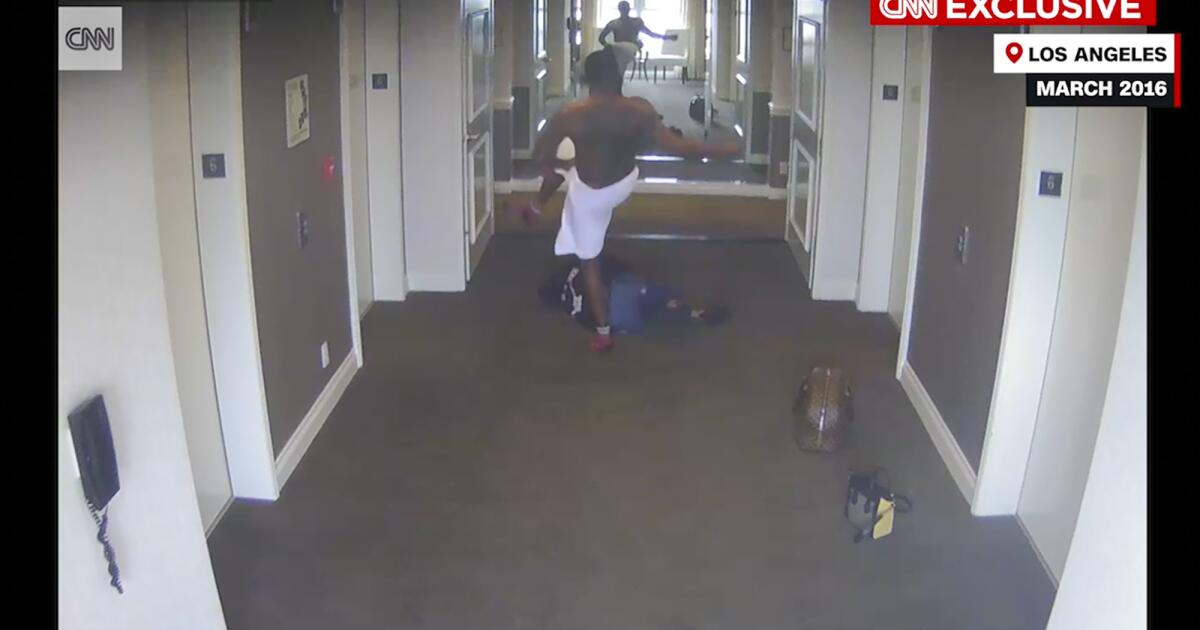
A disturbing 2016 video that shows Sean “Diddy” Combs assaulting singer Cassie, his former girlfriend, has emerged as a key battleground in his sex abuse case.
Last week, attorneys for the mogul suggested they could seek to have the tape excluded from his upcoming trial. Legal experts have described the video — taken in the hallway of an L.A. hotel in 2016 — as key evidence.
Combs faces charges of racketeering, sex trafficking and transportation for prostitution. He has pleaded not guilty and denies the charges.
So why is the tape such crucial evidence? Here is what we know.
What does the video show?
The video shows Combs chasing, kicking, dragging and hurling a glass vase at Cassie, a singer whose real name is Casandra Ventura. It corroborates parts of a civil lawsuit Ventura filed against Combs last year, which was settled a day after it was filed in U.S. District Court for the Southern District of New York.
The recording, dated March 5, 2016, shows Ventura in a hoodie and carrying a duffel bag, walking in a hotel hallway toward an elevator. Combs can be seen running down the same hallway, shirtless and holding a towel around his waist.
The lawsuit said it occurred at the InterContinental hotel in Century City. After Combs fell asleep, Ventura attempted to leave the room, the lawsuit said, but he awoke and “began screaming” at her. “He followed her into the hallway of the hotel while yelling at her,” the complaint said. “He grabbed at her, and then took glass vases in the hallway and threw them at her, causing glass to crash around them as she ran to the elevator to escape.”
Security footage captured from another angle shows him grabbing Ventura’s head and throwing her on the ground, where he kicks her multiple times. He can also be seen picking up her bags and trying to drag her back to the first hallway.
The footage also shows Ventura using a hotel phone by the elevators, as well as Combs going back to his hotel room and then separately seemingly shoving Ventura into a corner. He is also seen throwing a vase in her direction.
Ventura also accused Combs in her lawsuit of raping her, forcing her to engage in sex acts with male sex workers and introducing her to “a lifestyle of excessive alcohol and substance abuse” that required her “to procure illicit prescriptions to satisfy his own addictions.”
Why was it important?
It was obtained and broadcast by CNN earlier this year amid a sweeping federal probe of Combs.
Legal experts have described it as very strong evidence for prosecutors.
But after facing intense backlash after it was posted in May, Combs posted a video on Instagram in which he apologized for his behavior in the video.
Cassie’s legal team disputed the sincerity of his words.
What is the dispute over the tape now?
Combs lawyers this week accused the government of waging a campaign to leak evidence, including the tape. They said they might also ask a judge to exclude the tape from the trial.
Combs’ lawyers allege that the government, through investigators with the Department of Homeland Security, “engaged in a seven-month campaign … strategically leaking confidential grand jury material and information, including the 2016 Intercontinental videotape, in order to prejudice the public and potential jurors against Mr. Combs.”
They acknowledged in the court filing that prosecutors, after being informed of the attorneys’ intention to file the leak allegations, responded that the Department of Homeland Security “did not have possession of the videotape prior to CNN’s” making it public and that the CNN video “was not obtained through grand jury process.” Federal officials have yet to comment on the filing.
They also want the “suppression of any evidence leaked by government employees.”
Prosecutors have denied any government role in the leak. “The Government was not in possession of the video before its publication by CNN. Indeed, at the time of CNN’s publication, the Government did not possess any video of the March 2016 incident,” prosecutors wrote.
What’s next?
A judge has yet to weigh in on the accusations but both sides have agreed not to speak about case specifics to the media.
Combs remained behind bars as his lawyers made a third bid for him to be released on $50 million pending a trial.
U.S. District Court Judge Arun Subramanian approved a May 5 trial date for Combs over April after his attorneys said they have piles of case documents and information to review.
Subramanian then asked the prosecution how long the trial would last.
Asst. U.S. Atty. Emily Johnson initially said three weeks, but then cautioned that there could be a superseding indictment on the horizon. Superseding indictments can include additional charges, more defendants, or both.
Marc Agnifilio, Combs’ lead attorney, said he believed the defense would take a week to make their case in a trial.
-

 World1 week ago
World1 week agoUkrainian stronghold Vuhledar falls to Russian offensive after two years of bombardment
-

 Technology1 week ago
Technology1 week agoBeware of fraudsters posing as government officials trying to steal your cash
-

 Health1 week ago
Health1 week agoHealth, happiness and helping others are vital parts of free and responsible society, Founding Fathers taught
-

 Sports1 week ago
Sports1 week agoFreddie Freeman says his ankle sprain is worst injury he's ever tried to play through
-

 News1 week ago
News1 week agoLebanon says 50 medics killed in past three days as Israel extends its bombardment
-
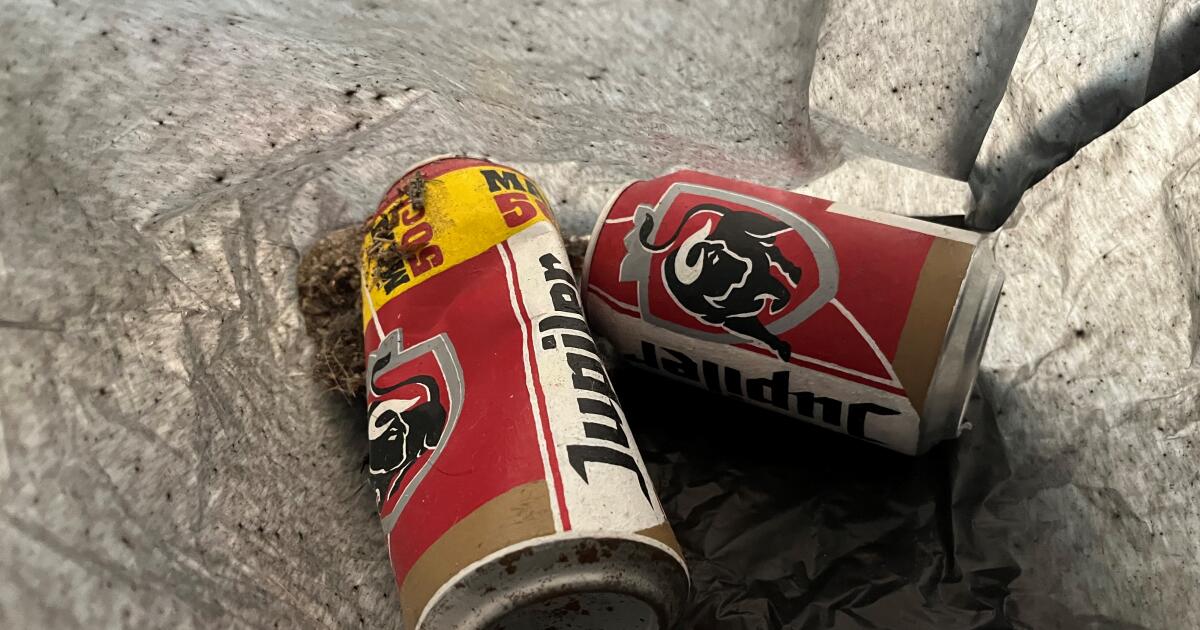
 Entertainment4 days ago
Entertainment4 days agoHold my beer can: Museum says a worker thought unique art installation was trash
-

 Entertainment5 days ago
Entertainment5 days ago'The Office' star Jenna Fischer reveals private breast cancer battle: 'I am cancer free'
-
/cdn.vox-cdn.com/uploads/chorus_asset/file/25673932/462754179_560996103109958_6880455562272353471_n.jpg)
/cdn.vox-cdn.com/uploads/chorus_asset/file/25673932/462754179_560996103109958_6880455562272353471_n.jpg) Technology1 day ago
Technology1 day agoMeta suggests AI Northern Lights pics are as good as the real thing
